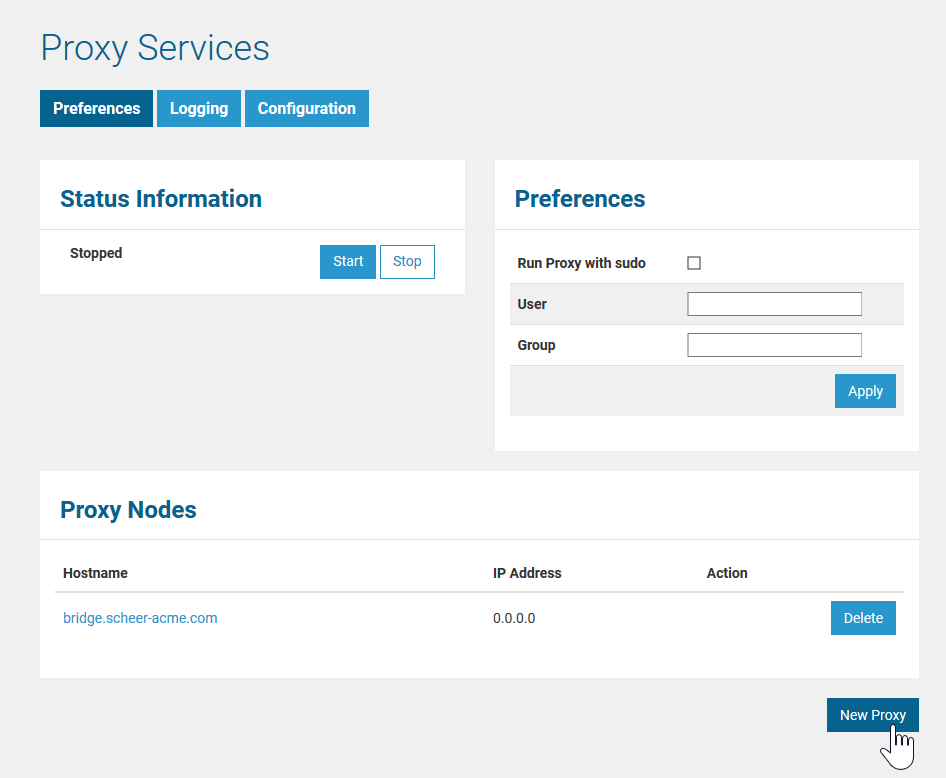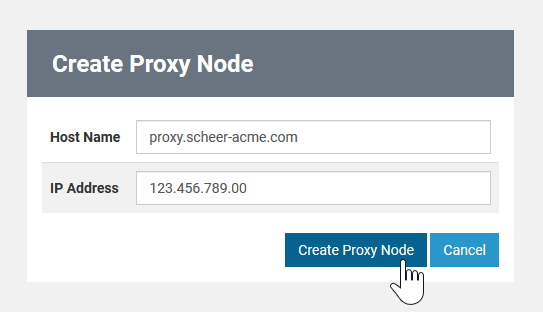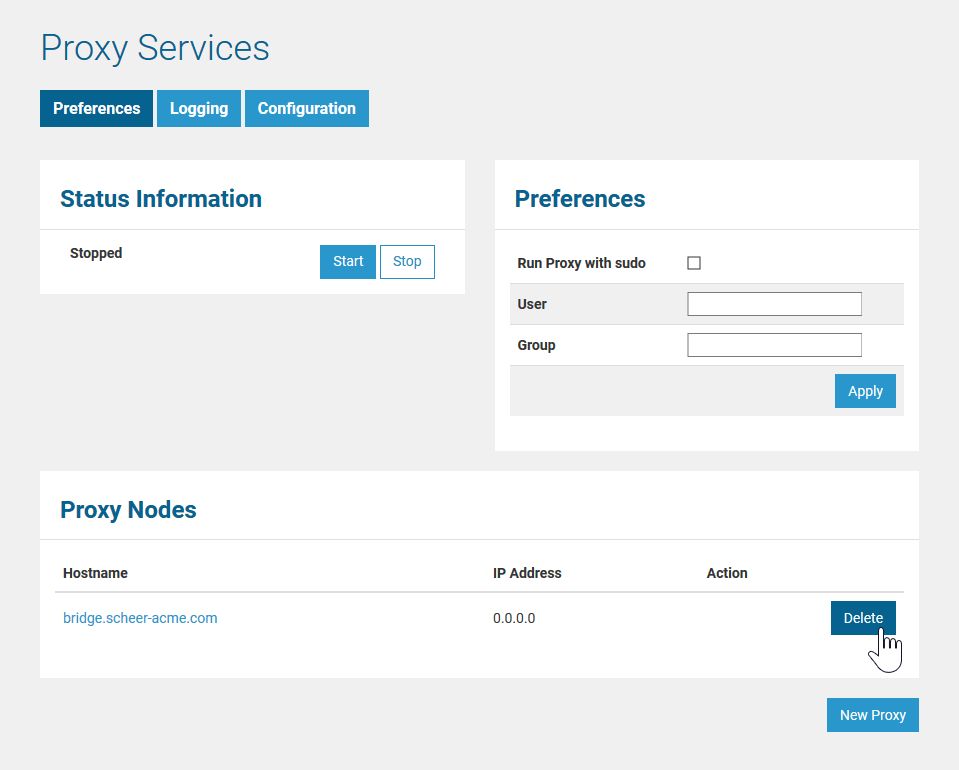Creating Proxy Nodes
Only users with administration rights are allowed to create proxy nodes.
In the Node Instances section of the navigation, click the name of the node instance that runs the proxy service. Then, click the sub-navigation item Proxy Services. The tab Preferences is displayed initially and displays a list of all proxy nodes defined on this proxy.
You need to stop the proxy service first, before creating new proxy nodes.

|
Click New Proxy to create a new proxy node. |

|
In the Create Proxy Node tab enter the details of the proxy node. |
|
Host Name |
A known DNS name of the machine the proxy is running on. |
|
IP Adress |
An IP Address of the machine, the proxy is running on or 0.0.0.0 if the IP address is to be assigned dynamically (DHCP). |
Click Create Proxy Node or Cancel to cancel the action.
After successfully having created a proxy node, the main proxy page is displayed again showing updated proxy information.
Deleting Proxy Nodes
Only users with administration rights are allowed to delete proxy nodes.
In the Node Instances section of the navigation, click the name of the node instance that runs the deployed proxy service. Then, click the sub-navigation item Proxy Services. The tab Preferences is displayed initially and displays al list of all proxy nodes defined on this proxy.
You need to stop the proxy service first, before deleting proxy nodes.

|
Click the Delete button of the proxy node you want to delete. Make sure that official certificates you bought from a certification company, are exported before deleting the proxy node. The certificate files will not be removed on delete but are overwritten, in case you create a proxy node with the same name again.
|

|
A confirmation dialog is displayed. If there are xUML services connected to this proxy node, a warning is displayed. The action can be committed or canceled. The xUML service connected to this proxy node will continue to run and remains being directly accessible via its control port, but the connection to the proxy will be lost. To use the service via a proxy again, it has to be deployed with its proxy definitions once again. |
